India, known for its diverse landscapes and rich cultural heritage, experiences one of the most remarkable natural phenomena – the monsoon season. This annual event not only replenishes the land but also offers a unique experience for tourists seeking adventure and cultural immersion.
Introduction to the Monsoon Season in India
India, with its diverse geography and varying climates, experiences a unique phenomenon known as the monsoon season. This heavy rainfall from June to September brings relief and rejuvenation after the scorching summer heat. People across the country highly anticipate the arrival of the monsoons, as they not only replenish the water reserves but also transform the landscape into a lush green paradise.
Originating from the Bay of Bengal and Arabian Sea, the southwest monsoon winds travel towards India, bringing rain to most parts of the country. The onset of monsoons is marked by dark clouds gathering in the sky, followed by strong gusts of wind and thunderstorms. When these rains hit Indian soil, they create an enchanting atmosphere that captures everyone’s hearts.
The monsoon season plays a vital role in India’s economy, as agriculture heavily depends on these rains. The farmers eagerly wait for this time of year to sow their crops and reap their harvests later in the year. It is also a significant source of groundwater recharge for drinking water supplies in many regions.
Apart from its importance to agriculture and water supply, what makes monsoons truly magical is their effect on tourism. The rainy season brings out a different side of India that can be enjoyed by every traveler seeking new experiences.
One can witness nature at its best during this time – lakes overflow with crystal clear water, rivers flow with full force, and hillsides are covered with blooming flowers. The aroma of wet earth fills the air while colorful umbrellas dotting streets make for picturesque landscapes.
However, it’s crucial to note that with monsoons come challenges like waterlogging, landslides, and floods. Therefore, it’s essential to plan your travels accordingly and avoid areas prone to these hazards.
Why Monsoons are the Best Time to Travel in India?
India, with its diverse landscape and rich culture, is a country that can be explored in any season. However, there is something truly magical about traveling to India during the monsoon season. The monsoons are characterized by heavy rainfall and lush greenery, making it the perfect time to visit some of the most popular destinations in India.
One of the main reasons why monsoons are the best time to travel in India is because of the pleasant weather they bring along. After months of scorching heat, the arrival of monsoons brings much-needed relief from the sweltering temperatures. The rain showers cool down the atmosphere, making it perfect for outdoor activities like hiking or sightseeing. Moreover, witnessing a downpour against a backdrop of lush green hills or ancient monuments adds a romantic and mystical touch to your travels.
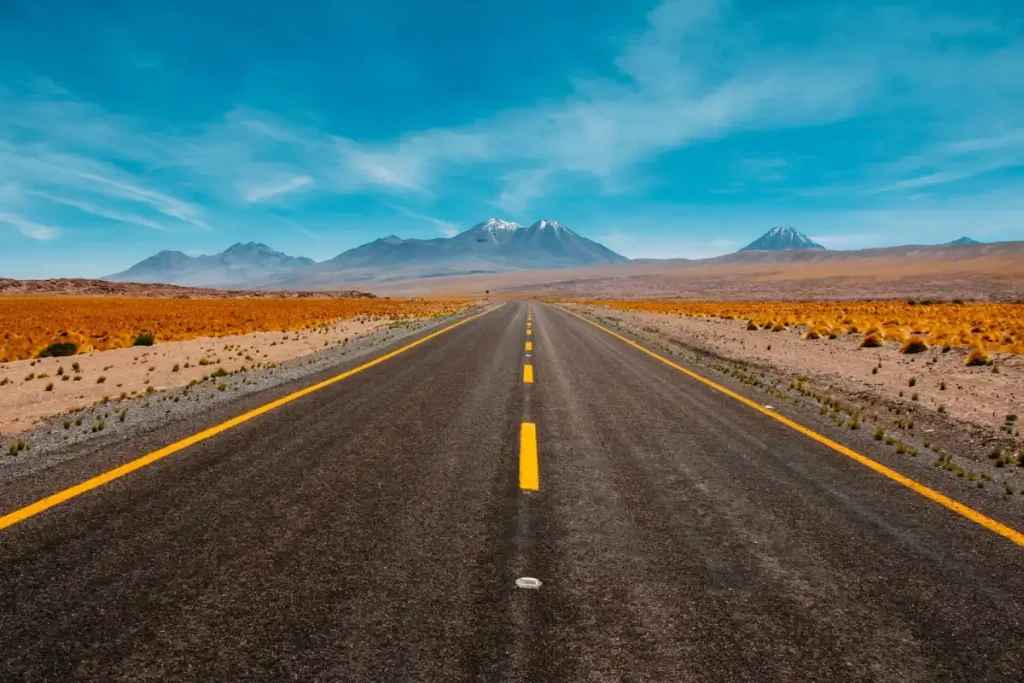
Another reason why monsoons are an ideal time to visit India is because it is considered off-season for tourism. This means that popular tourist destinations tend to be less crowded during this time, allowing travelers to have a more intimate and authentic experience. Also, many hotels and airlines offer great discounts during this period, making it easier on your pocket.
The monsoon season also has a significant cultural significance in India. It marks various festivals such as Teej, Raksha Bandhan, Janmashtami, Ganesh Chaturthi and Onam which are celebrated with great zeal and fervor all over the country. These festivals provide a glimpse into traditional Indian customs and offer opportunities for cultural immersion.
Moreover, one must mention its impact on nature before traveling during monsoons. The rain transforms barren landscapes into verdant forests filled with blooming flowers and gushing waterfalls. National parks such as Jim Corbett National Park or Ranthambore National Park become even more picturesque during this season as animals come out to quench their thirst at natural water sources.
Additionally, monsoons also bring out the best of India’s architecture. The famous UNESCO World Heritage Sites such as the Taj Mahal, Red Fort, and Hampi look even more majestic in the rain. The intricate carvings on ancient temples and forts appear to be more vivid against a backdrop of dark clouds and lush greenery.
The monsoon season is undoubtedly one of India’s best times to travel. With pleasant weather, fewer crowds, cultural celebrations, and stunning natural beauty, it offers a unique and unforgettable experience for travelers. So why wait? Pack your bags and head to India during monsoons to witness its magic for yourself!
You can apply for a tourist visa here.
Top Destinations to Visit During Monsoons in India
1. Munnar, Kerala
Known for its picturesque tea plantations and misty mountains, Munnar is a popular hill station in Kerala that becomes even more enchanting during the monsoon season. With heavy rainfall and cool temperatures, this place becomes a paradise for nature lovers. Stroll through the lush green valleys or visit the famous Mattupetty Dam to witness the gushing waterfalls amidst foggy surroundings.
2. Coorg, Karnataka
In the Western Ghats of Karnataka, Coorg is another beautiful destination that comes alive during monsoons. The coffee plantations turn into vibrant shades of green while the rivers and waterfalls are at their full glory. You can also trekking or river rafting here if you’re feeling adventurous.
3. Udaipur, Rajasthan
Udaipur may not be your typical choice for a monsoon getaway due to its desert landscape; however, this city transforms into an oasis during this time of year. With intermittent showers and cooler temperatures, Udaipur’s lakes become fuller and more captivating. You can also take a boat ride on Lake Pichola or visit the Monsoon Palace for panoramic views of Udaipur’s stunning skyline.
4. Shillong, Meghalaya
Famously known as “the Scotland of East,” Shillong in Meghalaya receives heavy rainfall throughout the year; however, it becomes exceptionally charming during monsoons with its verdant hills and cascading waterfalls. The nearby village of Mawlynnong, known for its cleanliness and natural beauty, is also worth a visit during this time.
5. Leh-Ladakh, Jammu and Kashmir
While most travelers prefer to visit Leh-Ladakh during summer, monsoons offer a unique and offbeat experience here. Leh-Ladakh becomes a paradise for photographers with lush green valleys, blooming flowers, and clear blue skies after rain showers. During this time, you can also indulge in adventure activities like trekking or river rafting.
Monsoons in India may bring some challenges, like intermittent transport delays or roadblocks due to landslides; however, the breathtaking beauty of these destinations makes it all worth it. So pack your bags and head out to experience the magic of monsoons in India at these top destinations.
Popular Monsoon Destinations
Goa: The Beach Paradise
Goa, also known as the “Pearl of the Orient,” is a coastal state in western India. It is a popular tourist destination all year round, but it truly comes to life during the monsoon season. With its pristine beaches, lush greenery, and vibrant culture, Goa offers a unique experience for travelers looking to embrace the magic of the monsoons.
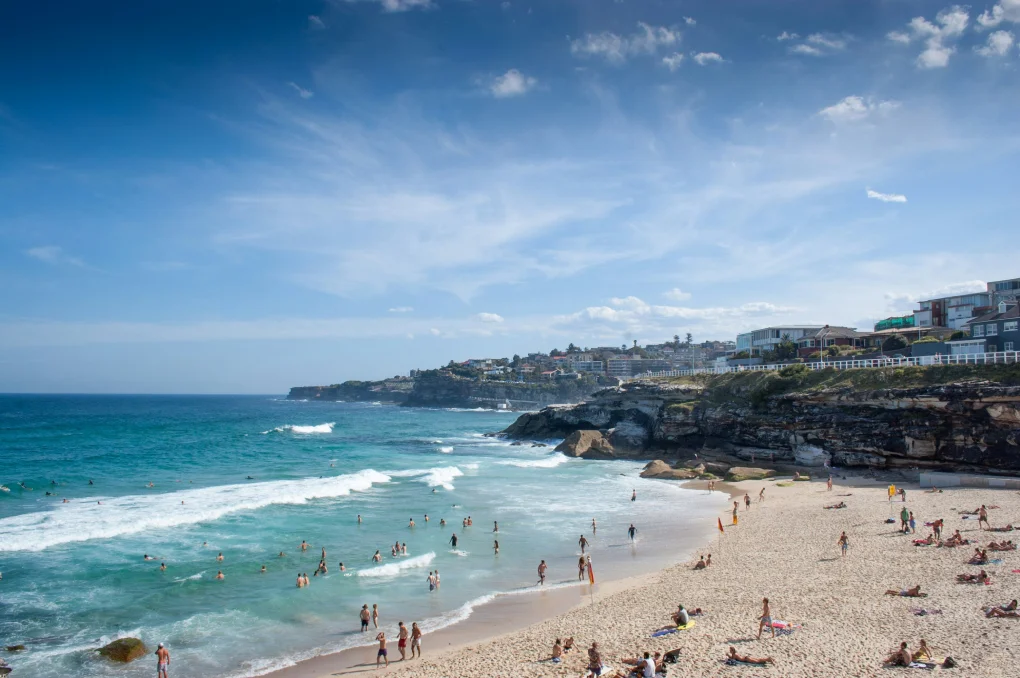
One of the biggest draws of Goa during monsoon season is its stunning beaches. The rain-washed shores transform into a mesmerizing sight with their golden sands and crystal-clear waters. The most famous beach in Goa is undoubtedly Calangute Beach, often called the “Queen of Beaches.” This lively stretch of coastline offers many water sports activities, such as parasailing and jet skiing, for adventure enthusiasts. For those seeking some peace, head to Arambol Beach, which boasts serene surroundings and breathtaking views.
Beyond its beautiful beaches, Goa’s natural beauty shines through during the monsoon season. The Western Ghats that run through the state come alive with lush green forests and cascading waterfalls. Dudhsagar Falls, one of India’s tallest waterfalls, is a must-visit during this time. The heavy rains make it even more majestic as it cascades down from over 1000 feet.
Monsoons are also an excellent time to explore Goa’s rich cultural heritage. With fewer tourists, you can immerse yourself in Goan traditions and customs without distractions. Take a stroll through Fontainhas – Goa’s Latin Quarter – and admire its colorful Portuguese-style houses adorned with balconies overflowing with flowers. You can also visit ancient temples like Mangeshi Temple or churches like Basilica de Bom Jesus in Old Goa to witness their architecture at its best during this season.
In addition to its natural beauty and cultural experiences, the monsoon also brings some delicious Goan cuisine. The state is famous for its seafood, and the monsoon season is the best time to try out some delectable dishes like prawn curry, fish fry, and Goan sausage pulao. The local feni – a traditional drink made from cashew fruit – is also a must-try during this time.
Goa offers a unique and unforgettable experience for travelers during the monsoon season. With its stunning beaches, lush greenery, vibrant culture, and delicious food, it truly lives up to its reputation as the beach paradise of India. So pack your bags and get ready to experience the magic of monsoons in Goa!
Kerala: The Backwaters and Greenery
Kerala, also known as “God’s Own Country,” is a state located on the southwestern coast of India. It is well-known for its natural beauty, backwaters, and lush greenery. The monsoon season in Kerala brings out the true essence of this beautiful state and makes it an ideal destination for travelers seeking a unique experience.

The backwaters of Kerala are a network of interconnected canals, lagoons, and lakes that run parallel to the Arabian Sea. This serene landscape results from the monsoon rains that fill up these water bodies, creating a peaceful and romantic atmosphere. One of the best ways to explore the backwaters is by taking a houseboat ride. These traditional boats have been converted into luxurious floating accommodations with all modern amenities that provide travelers with an unforgettable experience.
As you cruise through the backwaters, you will witness nature at its best – tall coconut trees swaying in the wind, emerald green paddy fields, and colorful birds flying overhead. Raindrops hitting the water create a soothing melody that calms your mind and soul. You can also catch glimpses of local life as you pass by small villages nestled along the banks of these waterways.
The monsoons also bring out the vibrant greenery that covers most parts of Kerala. The Western Ghats mountain range runs through this state, home to rich biodiversity and numerous wildlife sanctuaries like Periyar National Park and Wayanad Wildlife Sanctuary. The forest comes alive during monsoons with lush vegetation, providing shelter to various species of animals such as elephants, tigers, deer, and monkeys. Taking a guided trek or safari through these forests during monsoons allows you to see these creatures in their natural habitats while enjoying breathtaking views.
Besides its natural beauty, Kerala is also famous for its Ayurvedic treatments, which are believed to be more effective during the monsoon season due to the moist and cool climate. You can indulge in a rejuvenating Ayurvedic massage or treatment while enjoying the sound of rain outside.
Kerala is a must-visit destination for travelers seeking a unique monsoon experience. Its backwaters and greenery come alive during this season, making it an ideal destination for nature lovers and those looking for a peaceful escape from the hustle and bustle of city life. So, pack your bags and get ready to experience the magic of monsoons in God’s Own Country!
Meghalaya: The Land of Clouds and Waterfalls
Meghalaya, meaning “abode of clouds” in Sanskrit, truly lives up to its name as it is a paradise for nature lovers and adventurous travelers. Located in northeastern India, Meghalaya is known for its mesmerizing landscapes, rich cultural heritage, and abundant rainfall during the monsoon season.
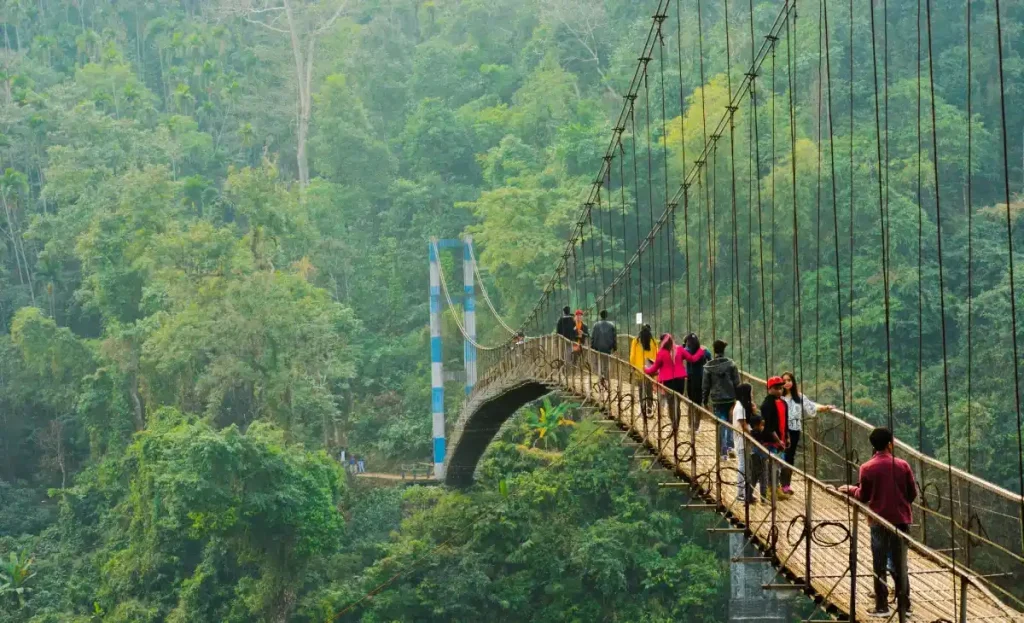
Meghalaya’s monsoon season starts from June until September/October. During this time, the state receives heavy rainfall, which gives life to the lush green forests, cascading waterfalls, and gurgling rivers. The beauty of Meghalaya during monsoons cannot be described in words but can only be experienced.
One of the must-see destinations in Meghalaya during monsoons is Cherrapunji, also known as Sohra. It is one of the wettest places on earth, receiving an average annual rainfall of 11 meters! The iconic double-decker living root bridge located here is a sight to behold. These bridges are made by weaving together aerial roots of rubber trees over 15-20 years. Monsoon season makes these bridges even more enchanting as they are surrounded by lush greenery and gushing waterfalls.
Another popular destination in Meghalaya is Mawlynnong Village, Asia’s cleanest village. This picturesque village boasts well-manicured gardens and bamboo houses that look straight out of a fairytale book during monsoons. The highlight of this village is the Sky View Point, where you can witness breathtaking views of Bangladesh plains while standing on an 85-foot-high bamboo-made viewing platform.
For adventure enthusiasts, Dawki should be on their list when visiting Meghalaya during monsoons. It is famous for its crystal clear Umngot river, which flows through huge boulders, creating natural pools for swimming or boating activities. Monsoon brings vibrant colors to this place, making it a perfect spot for photography enthusiasts.
Nohkalikai Falls, the tallest plunge waterfall in India, is another attraction that becomes even more captivating during monsoons. The waterfall plunges from 1115 feet and creates a misty veil around it. Trekking to the viewpoint of Nohkalikai Falls during monsoon season is an experience like no other.
In addition to these destinations, Meghalaya also offers stunning views of rolling hills, mist-covered valleys, and charming villages during monsoon season. It’s the perfect destination for those seeking tranquility in the lap of nature.
So pack your bags and head to Meghalaya during monsoons to witness the magic of clouds and waterfalls in this enchanting land. You will leave with memories that will last a lifetime!
Ladakh: The High Altitude Beauty
Ladakh, a region in the northernmost part of India, is often called the “Land of High Passes” and is known for its high-altitude beauty. Located at an average elevation of 11,500 feet above sea level, Ladakh is a cold desert with stark landscapes unlike any other place in India. Despite being a popular tourist destination throughout the year, it becomes even more alluring during the monsoon season.
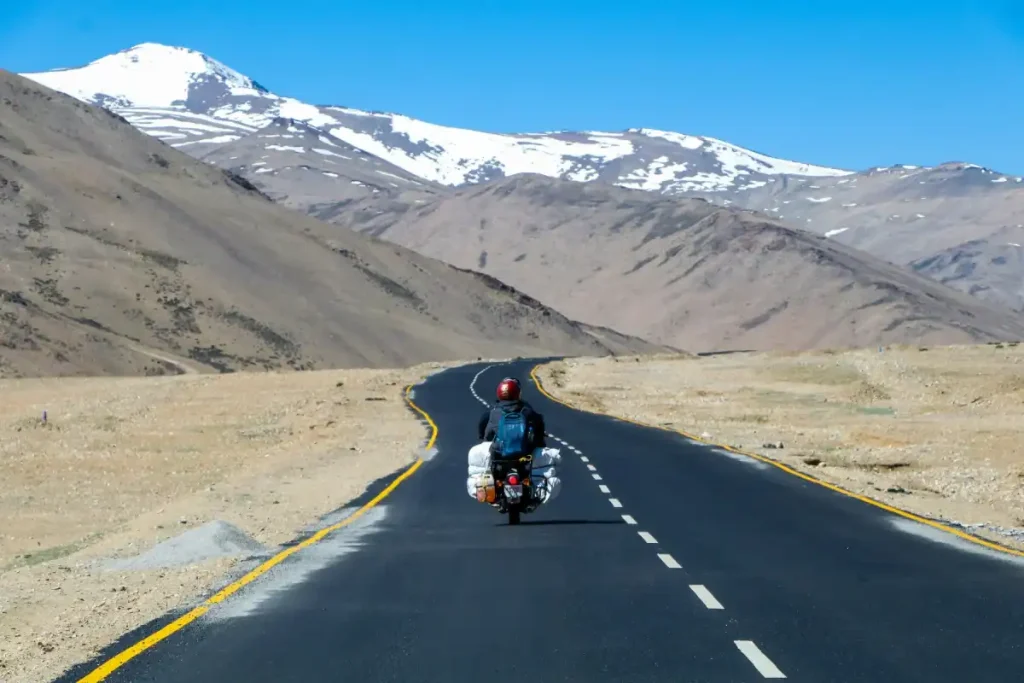
The monsoon season in Ladakh starts in June and lasts till September. The region experiences light to moderate rainfall during this time, transforming its barren landscape into a lush green paradise. The sight of greenery amidst the rugged mountains and valleys is breathtaking and mesmerises visitors.
One of the main reasons why Ladakh should be on every traveler’s list during monsoons is because it offers an escape from the scorching heat of other parts of India. The temperature during this time ranges between 15-25 degrees Celsius, making it perfect weather for outdoor activities such as trekking and camping. The clear blue skies and intermittent showers also add to the charm of this place.
Another major attraction in Ladakh during monsoons is its numerous lakes that come alive with rainwater. Pangong Tso Lake, one of the most famous lakes in Ladakh, turns into a stunning shade of blue-green due to increased water levels during this time. Visitors can also witness migratory birds flocking to these lakes, adding to their picturesque setting.
Monsoon season also brings out festivals and cultural events in Ladakh that showcase its rich heritage and traditions. One such festival is the Hemis Festival, which takes place at Hemis Monastery and celebrates Tibetan Buddhism through colourful masked dances and rituals. This vibrant festival attracts tourists from all over the world who come to experience the unique culture of Ladakh.
Besides natural beauty and cultural experiences, the monsoon in Ladakh offers a chance to indulge in adventure sports like river rafting and mountain biking. The increased river water levels make for thrilling rafting experiences, while the smooth roads and greenery make biking through the mountains an unforgettable experience.
During monsoons, Ladakh is a sight to behold and should be noticed by any traveler looking for a unique, offbeat destination. Its high altitude beauty, pleasant weather, cultural events, and adventure activities make it a must-visit place during the rainy season. So pack your bags and get ready to experience the magic of monsoons in Ladakh.
Rajasthan: The Desert Oasis
Rajasthan, also known as the “Land of Kings,” is a state located in the northwestern part of India. It is a land of vibrant colours, majestic forts, and rich cultural heritage. However, during the monsoon season, this desert region transforms into an oasis of greenery and beauty. The otherwise dry landscape becomes a lush paradise that every traveller must experience.
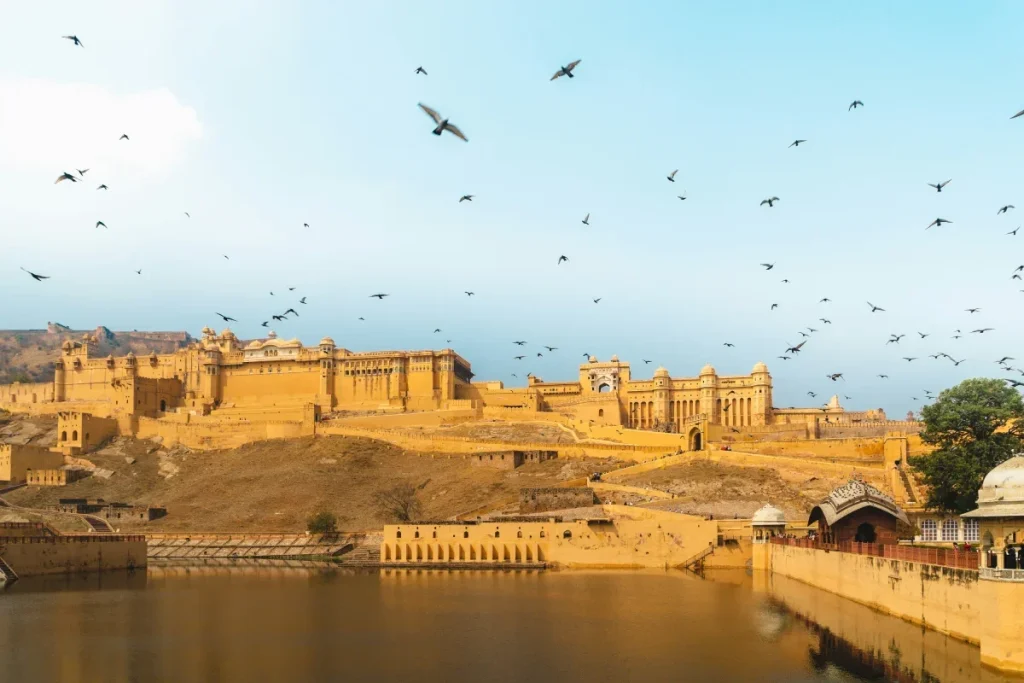
The monsoon season in Rajasthan starts in July and lasts till September. During this time, heavy rainfall covers the entire state with a blanket of greenery. The lakes get filled with water, and the barren lands turn into fields of crops. This transformation is truly magical to witness. The weather also becomes more pleasant and perfect for exploring the state.
One of the most popular destinations to experience this transformation is Udaipur – “The City of Lakes.” With its numerous lakes, Udaipur looks like a painting during monsoons. The serene waters surrounded by lush green hills create a picturesque view that will leave you spellbound. You can take a boat ride on Lake Pichola or visit Jagmandir Island Palace to enjoy the stunning views while sipping hot chai.
Another must-visit destination in Rajasthan during monsoons is Jaisalmer – “The Golden City.” Famous for its dunes, Jaisalmer gets covered with lush green vegetation during this season. The sight of camels grazing amidst these green dunes is truly mesmerizing. You can also opt for a camel or jeep safari through these dunes for an exhilarating experience.
For those looking for adventure activities during their trip to Rajasthan in monsoons, Mount Abu is your ideal destination. This hill station receives heavy rainfall, which results in gorgeous waterfalls cascading down from the mountainsides. You can also indulge in trekking or hiking through the lush forests surrounding Mount Abu.
Apart from the natural beauty, Rajasthan’s monsoon also brings various festivals and cultural events. The Teej festival is celebrated with great enthusiasm during this season, especially in Jaipur – “The Pink City.” This festival marks the arrival of monsoons and is dedicated to the goddess Parvati. You can witness colourful processions, traditional dances, and street markets selling delicious Rajasthani delicacies.
Rajasthan during monsoon is a sight to behold. It offers a unique experience you cannot find anywhere else in India. So pack your bags and head to this desert oasis for an unforgettable journey filled with vibrant colours, lush landscapes, and rich cultural experiences.
Tips for Travelling in Monsoon Season
Travelling during the monsoon season can be an exciting and memorable experience, but it also requires extra planning and precautions. Here are some important tips before embarking on a monsoon getaway in India.
- Check the weather forecast: The monsoon season in India can vary from region to region, so it’s important to stay updated on the weather conditions of your destination. Monitor the forecast and plan your trip accordingly to avoid any unexpected downpours.
- Pack appropriate clothing: Monsoon season means heavy rains, so pack waterproof or quick-drying clothes and footwear. Avoid wearing white or light-coloured garments as they are easily stained by mud and dirt during the rainy season.
- Carry necessary essentials: Along with rain gear, it is essential to carry other important items such as mosquito repellent, a first-aid kit, medication for motion sickness, and a plastic bag for wet clothes.
- Be mindful of transportation options: Heavy rainfall may disrupt transportation services such as flights, trains or buses. Have backup plans and allow for additional travel time while planning your itinerary.
- Choose accommodations wisely: Opt for hotels or homestays with proper drainage systems to avoid waterlogging issues. It’s also advisable to inquire about their backup power supply arrangements in case of power outages during heavy rains.
- Stay hydrated: Despite the cool weather, staying hydrated is crucial during monsoons. Always carry a reusable water bottle with you and drink plenty of fluids throughout your journey.
- Stay cautious near water bodies: Monsoon season brings about a rise in water levels of rivers, lakes, and waterfalls, making them dangerous for swimming or boating activities. Ensure that you follow safety guidelines provided by local authorities before engaging in any such activities.
- Leverage off-season discounts: Monsoon is considered the off-season for travel in India, which means you can get great deals on accommodations and activities. Take advantage of these discounts to save some money while planning your trip.
- Explore indoor activities: While heavy rains may limit outdoor exploration, monsoon is the perfect time to indulge in indoor activities such as cooking classes, spa treatments or museum visits. Make sure to add them to your itinerary for a well-rounded experience.
- Respect nature: It’s important to remember that monsoons bring about a much-needed respite from the scorching heat and help replenish the land with water. Respect nature and avoid littering during your travels.
FAQ
Is it safe to travel to India during the monsoon season?
Despite the heavy rainfall, traveling to India during the monsoon season can be safe if proper precautions are taken. It’s essential to stay updated on weather forecasts and heed any warnings issued by local authorities.
What are some must-have items to pack for a monsoon trip to India?
Essential items to pack include waterproof clothing, sturdy footwear, insect repellent, and medication for common ailments such as upset stomachs.
Are there any cultural events or festivals that take place during the monsoon season?
Yes, several festivals are celebrated during the monsoon season, including Teej, Raksha Bandhan, and Janmashtami. These events offer a unique insight into Indian culture and traditions.
How do monsoons affect wildlife viewing experiences in India?
While heavy rainfall may make wildlife sightings more challenging, it also creates lush habitats that attract a variety of species. Visitors may have the opportunity to see animals in their natural environment during the monsoon season.
What are some offbeat destinations to explore during the monsoon season?
Offbeat destinations such as Meghalaya, Agumbe, and Coorg offer unique experiences during the monsoon season, including trekking through rainforests and exploring hidden waterfalls.

